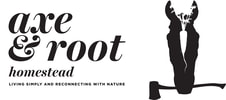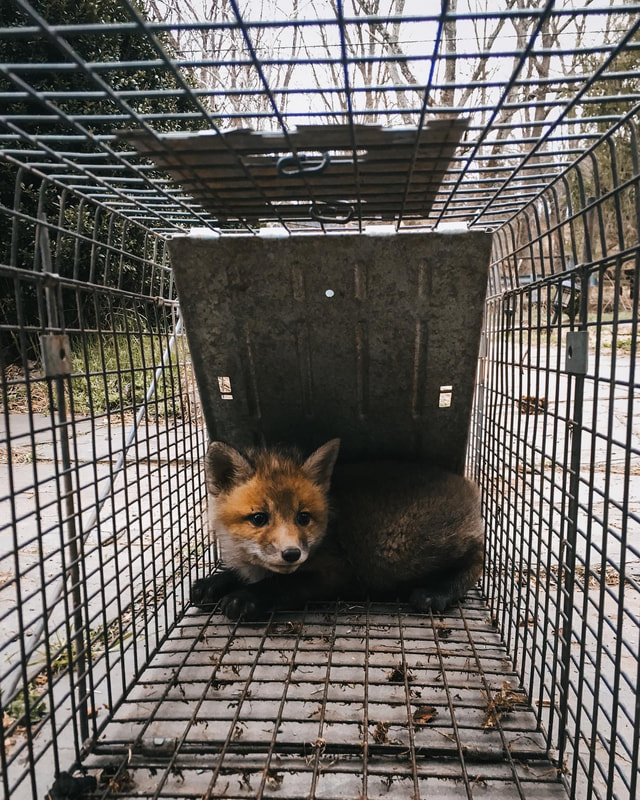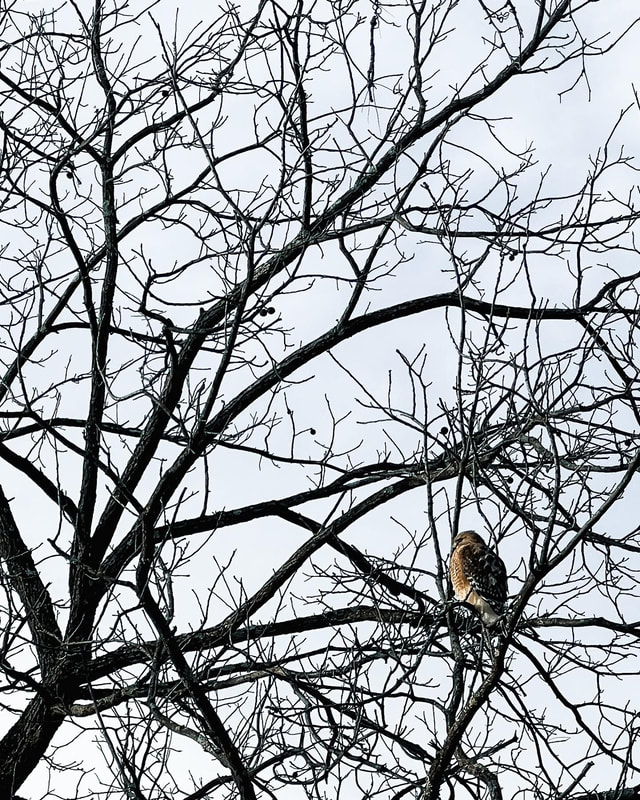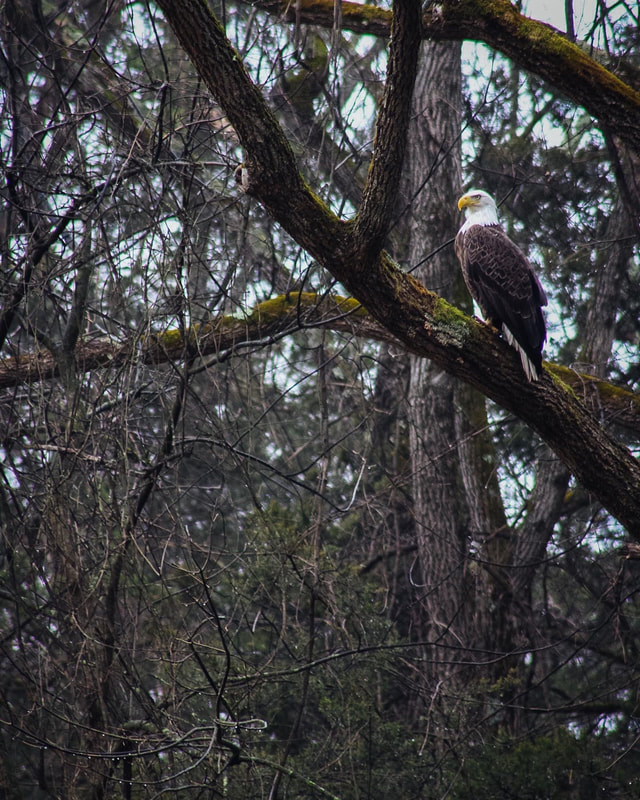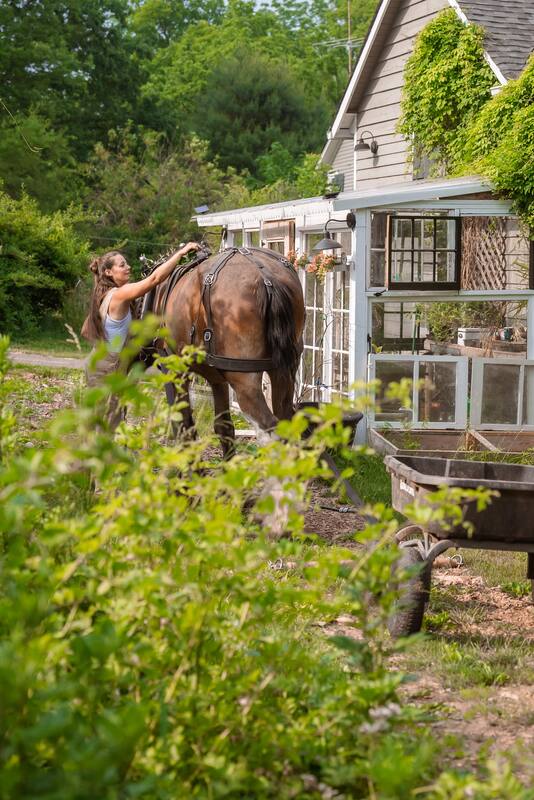|
I grow lots of blossoms alongside my food crops. Rather than segregate food and flowers, they’re woven together. I use herbs and flowers often as companions interplanted with my food (you can find many posts in the "permaculture" and "growing" categories based on companion plant benefits and specifics). But in this post, I wanted to talk about my approach or method of gardening which is my "layered permaculture garden method." I call it a layering method because I sow calendula, for example, in the spring alongside veggies. As the first layer of veggies reach maturity, the second layer (the calendula) is still small but supporting the food crops. By the time spring veggies are spent and done, the second layer of flowers reaches full height. The second layer shrouds any gaps from the first layer, protecting the soil. This means I often plant veggies and herbs first and wait a week or two before adding in some flower varieties to fill gaps in the spring. This ensures the growth rate of the flowers doesn’t crowd out and suppress food crops. As for layering a third and fourth planting, I absolutely do this come mid-summer. When I'm ready to plant for fall harvests in mid-July through August, crops like beets, carrots, fennel, greens, kale, broccoli, and other brassicas are inserted amongst the flowers. The permaculture benefit of planting seedlings this way is huge. Often the scent of many flowering herbs like oregano, lavender, nasturtium, basil, etc., is enough to deter cabbage moths and other pests. Conversely, beneficial insects are attracted to the blooms surrounding the crops, which increases pollination of veggie blossoms. Parasitic wasps are drawn to the garden and prey on any "bad bugs" loitering within. This leaves my new veggies protected while they grow. Cold loving flowers like calendula can be seeded as a fourth layer a few weeks after the third layer is planted.
As for the flowers that I choose, I go for self-seeding annuals for less work, like nigella, borage, chamomile and calendula. I heavily use perennials like lavender, non-invasive tansy, sterile comfrey, verbascum, speedwell, coneflower, foxglove, daisies, yarrow, rudbeckia, anemone, and roses to name a few. The benefits of perennials are many to the overall homestead ecosystem including increased carbon absorption by way of their woody plant tissues, their deep root networks which increase soil fertility, the fact that you don't have to replant them each year, the concept of them coming back and bigger and more full each season, and the many uses most of these perennials provide from edible rose petals to medicinal yarrow. Let’s talk about another permaculture powerhouse plant that’s actually in the same family as comfrey. It’s borage and, hopefully, after reading below, you’ll add it to your growing space too. :)
There are said to be loads of medicinal benefits of BORAGE. If you’re into the home apothecary, this may help an excellent plant to research. Graze on Fallen Fruit: How and Why to Pick up Fallen Apples/Pears During the Growing Season7/12/2024
There are three main reasons to pick up fallen fruit: 1. To break pest life cycles; 2. To reduce soil-retained diseases; 3. To deter an influx of wasps and stinging insects. Rather than pick up fallen fruit by hand, animals can be used to graze fallen fruit. This food-source is a means of nutrition for the animal, reduces work for the farmer, and allows the soil to gain fertilizer from droppings. When looking for companion plants for my vegetable growing spaces or for my fruit tree guilds, I always look first to plants that have stacked functions. Multipurpose plants can bring more than one benefit to a growing space. Common permaculture plants favored for their multiple benefits include Sunchokes (aka Jerusalem Artichokes), Comfrey, and Elderberry. Another incredible companion, which I turn to often, is Yarrow. Common Yarrow is prevalent throughout the six-acres of my farm. I've allowed wild clusters to accumulate in my food forests, have split and planted them in my guilds, and have started bringing in various colors for visual diversity. But it's not just the aesthetics that are pleasing--yarrow is loaded with function for any growing space:
This incredible plant is native to much of the United States which means it's likely already hardy and well-adapted to your microclimate, serves the local ecosystem, and will not displace nor eradicate local plantings. The top portion of my property is fully exposed and a lot of wind blows through the pasture. I currently have semi-dwarf apple trees and peach trees along this top edge with their guild members, but I think a wind barrier is needed. This windbreak will help protect the fruiting trees that already reside here PLUS it'll make the birds more comfortable in their pasture throughout the winter.
SERVICEBERRIES I'm choosing serviceberries for their ability to withstand wind and wide range of water and soil conditions. They provide edible berries that are beneficial to humans and both birds and wildlife. They have the ability to grow thickly and quickly. HONEYBERRIES I'm also adding honeyberries. Honeyberries are incredibly nutrient-dense with loads of antioxidants. They, too, thrive in a wide range of soil conditions especially if there's good drainage. Doubling up on plantings means more of a windbarrier, more privacy, and more food. Perennial plantings offer a home to birds and predatory insects who I would like to retain year-round, as they keep pest populations under control in our growing spaces. GOPHER CAGING: https://www.amazon.com/shop/axeandroo... CROP CLOCHES: https://www.amazon.com/shop/axeandroo... Check out Les Fermes du Bec Hellouin: https://www.fermedubec.com/english/ Elderberry is literally one of the most useful plants on the homestead. The flowers, berries, plant tissue, and root systems all have functions. And even better yet--it's incredibly easy to propagate. I planted my first elderberry about seven years ago in a bad location before I realized how large and how quickly these plants grow. Now, I use it for cuttings and propagation for other portions of the property. I personally use the berries for dehydrating and making homemade elderberry syrup, but I also am working on creating privacy hedges and windbreaks from these strong and hardy plants.
To make a cutting, be sure to cut new shoots at the base of the soil line. All cuts should be 45-degree angles and each section should host lots of nodes or future root buds. From there, the cuttings can be stored in water to promote root growth, potted in seedling containers until you're ready to place them in their permanent homes, or planted right in the ground at their forever location. No rooting hormone is required. Be sure to plant the elderberry cuttings at a minimum of 2" deep for best root network development. Elderberries love compost and water. They also prefer a partial- to full-sun location. It's worth mentioning here again that more than one variety of elderberry is not required, but certainly is helpful in increasing your yields. Pruning young fruit trees too much can cause over pruning damage and even death. Too little can cause branch wounds from rubbing, invite pests and disease, and decrease sunlight… which affects fruit! In this demo I'm sharing:
1. my rule for low branch trimming 2. what to remove 3. how to deal with bag worms the permaculture way 4. covering what is black knot fungus 5. removing suckers 6. how to trim a fruiting shrub back to a tree This video is just a basic overview for young fruiting trees. If you're looking for tips on fruit tree shaping, I've got a video on that here! Back in 2016, I had caught a fox kit accidentally in a have-a-heart trap. I was going to try to relocate a large fox who kept taking our ducks. She would look me in the eye, just feet from me, while taking my birds. I lost half my flock that year. I set out a trap in hopes of moving her to a new home, but I caught a kit instead. I hadn’t realized she was hunting to feed her offspring. I didn’t have it in me to hurt or remove the kit so I returned it. I knew then that I was a different breed of farmer, and that there had to be a way to grow food and keep stock safe while sharing space with wildlife. I started researching ideas for what I was calling “holistic homesteading” before I knew it was called permaculture. That’s when the shift went from a utopian idea to implementation and practice. 1. The first thing I did was get a livestock guardian dog. I knew if I removed one fox family, another would just move into their burrow. I needed a dog to communicate a boundary. 2. While waiting for my Anatolian Shepard to grow and be able to take charge of the birds, I upped my guardian geese numbers. They can’t withstand a physical fight with a predator, but they could sure sound their alarm and alert me when they saw something approach. 3. I dedicated specific areas of my land to wildlife and their traffic patterns. I respect their space, their comings and goings, and leave natural forage for them. Now, with these efforts in place, my birds are literally out 24/7 with their guardian protector. I don’t use a coop. They sleep in a pasture with access to an optional shelter. The fox keep to their trails and traffic areas and do not enter the farmyard. I see them almost daily circumventing the farm to hunt. Heron, owls, and hawks do not prey on my birds with the dog and guardian geese present.
Gophers and deer no longer enter my growing spaces. Anything fragile gets put inside a growing fence. Deer and gophers aren’t interested in walking past my guard dogs, even when they’re fenced in their pastures. These pastures reside on the exterior boundaries of my property lines. They would have to walk inward past the dogs and guardian goose alarms to get to my orchard and they simply choose not to. If natural hunters were not here, we would have increased pressure from raccoons, fisher cats, weasels, and more. Rather than deter wildlife, I invite owls by hanging owl housing. I do not remove nor destroy eagle nests. Black bear tossed my empty beehive around shortly after we moved in, thankfully, before I had installed my first hive. After that, I ratchet strap my hives tight and keep them within visibility of the dogs (at a safe distance). Rather than think of homesteading as a game of wildlife vs. my farm, I think of my stock and my plants as filling in the gaps of what nature doesn’t already provide here. I try to complement what exists rather than venture on an unproductive, frustrating journey of tug of war.
Sharing a refresher on how to compost. This time of year I’m heaping and tarping compost piles for spring planting. To successfully compost, 2/3 brown (carbon) or dry ingredients are required, with 1/3 green (nitrogen) or wet ingredients. A few notes:
1. I personally do not add additional moisture to my heaps since I live in a wet climate (central NJ). 2. I tarp my piles to activate hot composting. This breaks down the pile in as little as 4 months depending on the size and ingredients. Cold composting without a tarp can take 1 year or more. 3. When the right ratios are in place, compost should not smell. 4. Compost is great for adding organic matter to the soil. But it takes a while for solids to break down and become a liquid—the form plants require to absorb nutrients. Compost tea is a great way to feed plants immediately with the benefits of compost.
I grow spoon dipper and birdhouse gourds each season. I harvest them in the fall after the foliage has died back and dry them indoors, away from moisture. In the spring, the gourds should be very hard and the seeds should rattle around inside. I use a 1” drill bit and slowly drill a hole into one side of the gourd. I dump out the seeds—saving for planting—and my kids decorate them before we hang them in our trees.
HOW THIS BENEFITS YOUR GARDEN/ ORCHARD 1. Inviting birds to stick around all winter means they’ll be there already when bugs and pests make their first spring appearance. 2. Birds like sparrows love to snack on bag worms and coddling moth larvae. I hang these from my fruit trees to keep pests in check naturally. 3. When hung in your garden or growing spaces, birds are invited to stay and feed on cabbage worms, hornworms, and more. This simple effort gets kids involved in the garden, the orchard, and helps encourage native bird populations. You can find more activities similar to this one in my family seasonal living series called The Little Homesteader. |
Angela is the farmer and content creator behind Axe & Root Homestead® LLC. This historic six-acre permaculture farm is home to two Clydesdale horses, ten honeybee hives, five sheep, two guardian dogs, barn cats and a flock of 40 geese and ducks. The farm produces maple syrup, fruit from a small orchard and loads of garden produce for consumption, preservation and donation to the local food pantry.
The Sustainable Homestead is available NOW!
Categories
All
|
